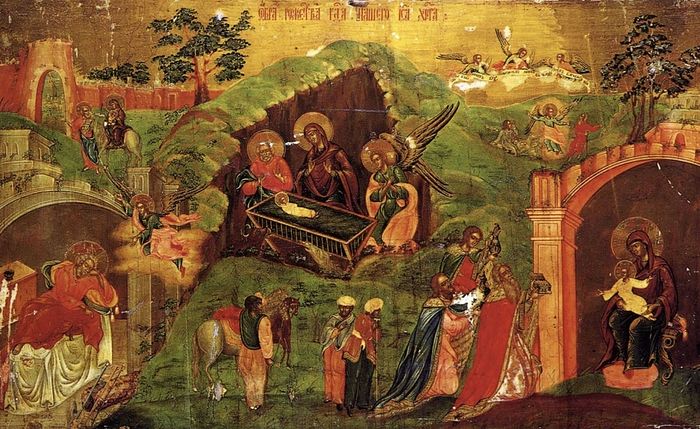My Beloved Brethren and Blessed Children in the Lord,
Nativity
Christ is born! Glorify Him!
As we celebrate the Birth of Jesus Christ in the flesh, and His baptism in the River Jordan, we call to mind the important roles that his mother, the Theotokos and Ever-Virgin Mary, and his Forerunner, John the Baptist, had in bringing about these events that manifested Christ to the world. For the Theotokos and the Baptist are indeed excellent examples for us, as we share their same calling to make Christ present in the world.
When Mary received the glad tidings that she was to become the Birth-giver of God, she humbly responded: “Behold, I am the handmaid of the Lord; let it be to me according to thy word.” She then visited her relative Elizabeth, who was six months pregnant, and when she greeted Elizabeth, the babe in Elizabeth’s womb leaped for joy. This babe, as we well know, was Saint John the Baptist, the Forerunner of Christ.
The importance of John the Baptist in the Gospels cannot be overemphasized. As the Forerunner of Christ, he not only proclaimed that Jesus of Nazareth was the Christ, but also died a martyr’s death for speaking the truth, foreshadowing that Christ, the Truth, would die for the Salvation of the world. In dying for the truth, John is not only the Forerunner to Christ, but also the Forerunner to all those who have died for Christ throughout the centuries, the countless martyrs who have struggled and been slain for Christ for more than two thousand years. Some Christians are still called to this level of witness, to this level of dying in martyrdom for the sake of Christ. The twentieth century saw more Christian martyrs than any century beforehand, in places such as Russia, Romania, and Turkey. The twenty-first in turn is seeing many Christian martyrs in places like Ethiopia, Nigeria, and Syria. We pray for strength and steadfastness for all Christians suffering persecution for the sake of Christ, and in turn we ask for the intercessions of those who have died martyr’s deaths in witness of Christ.
Yet certainly, not all Christians are called to be slain for Christ, to be beheaded like John the Baptist or many of the later martyrs. Neither are all called to be like the Baptist as public preachers or wandering ascetics. For those who do not have the Baptist’s calling, another route is provided: the calling to live like the Virgin Mary. For while John made Christ known to the world, it was through the Virgin Mary that Christ came to be born in the flesh. She is the Theotokos, the bearer of the Lord Jesus Christ, and in the same way, Christians can “bear Christ” and make Him present. Instead of preaching God’s works across hills and dales, we can keep them close and ponder them in our hearts (see Luke 2:19). By thus meditating on God’s works, we will become authentically humble, gentle, and kind like Mary. And in this process of contemplating what Christ has done for us, we will gain boldness before Him in our private conversations with Him. Forging a personal relationship with Christ, we will have boldness to ask Him and His servants for what is needed, just as Mary His Mother did at the wedding in Cana.
These two great figures, John the Baptist and Mary the Theotokos, thus help us grapple with a perennial problem of Christians: how do we keep the winter feasts of the Nativity and Theophany meaningful throughout the year? The Church’s calendar points us to the solution: the day after the Nativity of the Lord, December 26, is dedicated to the Lord’s Mother, and January 7, the day after the Theophany of the Lord, is dedicated to the Lord’s Forerunner. Hence the Church tells us that imitation of the Forerunner and the Theotokos are the keys to making Christ’s winter feasts more than just a few days of celebration. The Baptist shows us the way of outward witness, of forceful and defiant objection to the falsehood propagated in the world, while the Theotokos shows us the way of inner stillness, of contemplation of the mystery of Christ. And Christians can imitate the lifestyle of either one, because ultimately both John and the Theotokos are doing the same thing: both are witnesses to Christ, and steadfastly remain eternal witnesses to His death and resurrection.
So, give glory to Christ on the feasts of His Nativity and Theophany, while honoring and magnifying in song the Theotokos and Mother of the Light, and praising the Baptist as is his due. For they reveal to us the different ways in which Christians can witness to Christ, and are our primary examples of how to live a Christian life, not only at this festal season of Nativity and Theophany, but throughout the entire year.
Christ is born! Glorify Him!
With love in the New-Born Christ,
+ Tikhon
Archbishop of Washington
Metropolitan of All America and Canada



